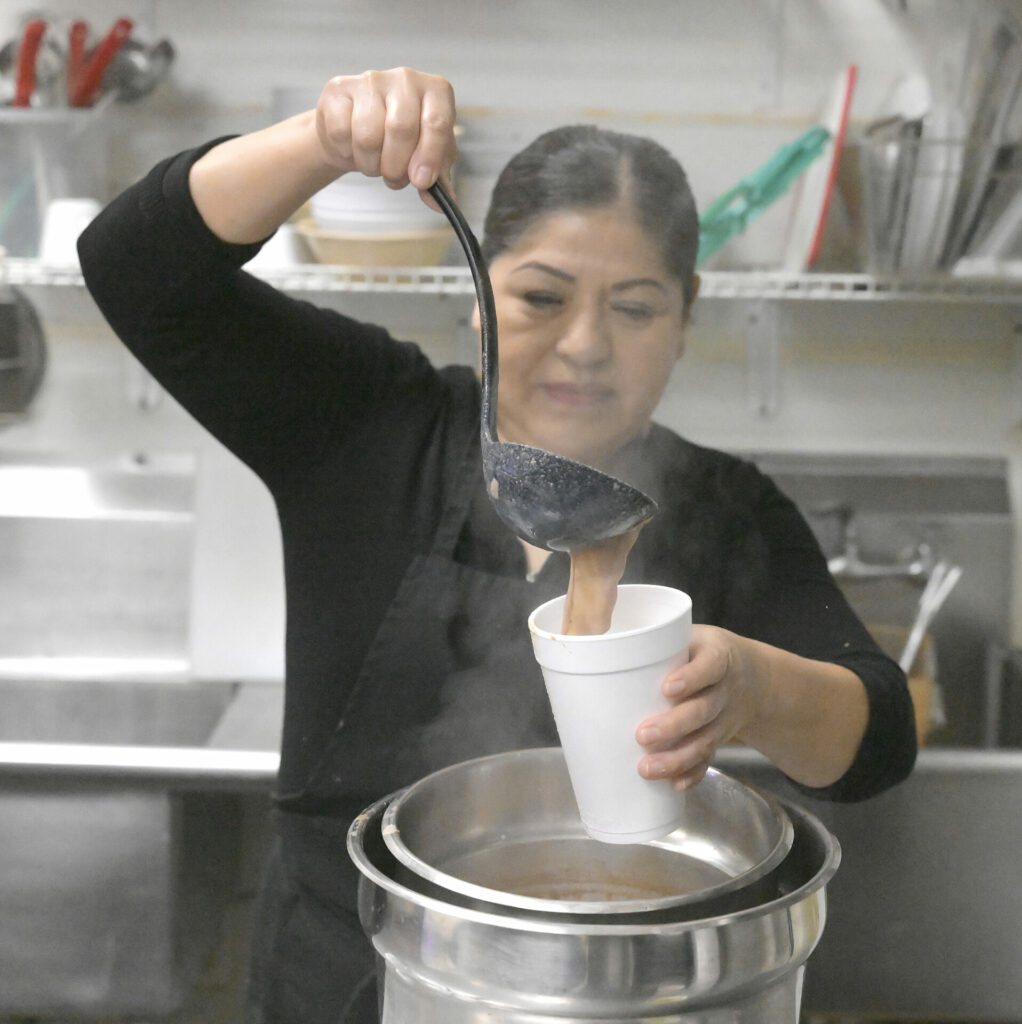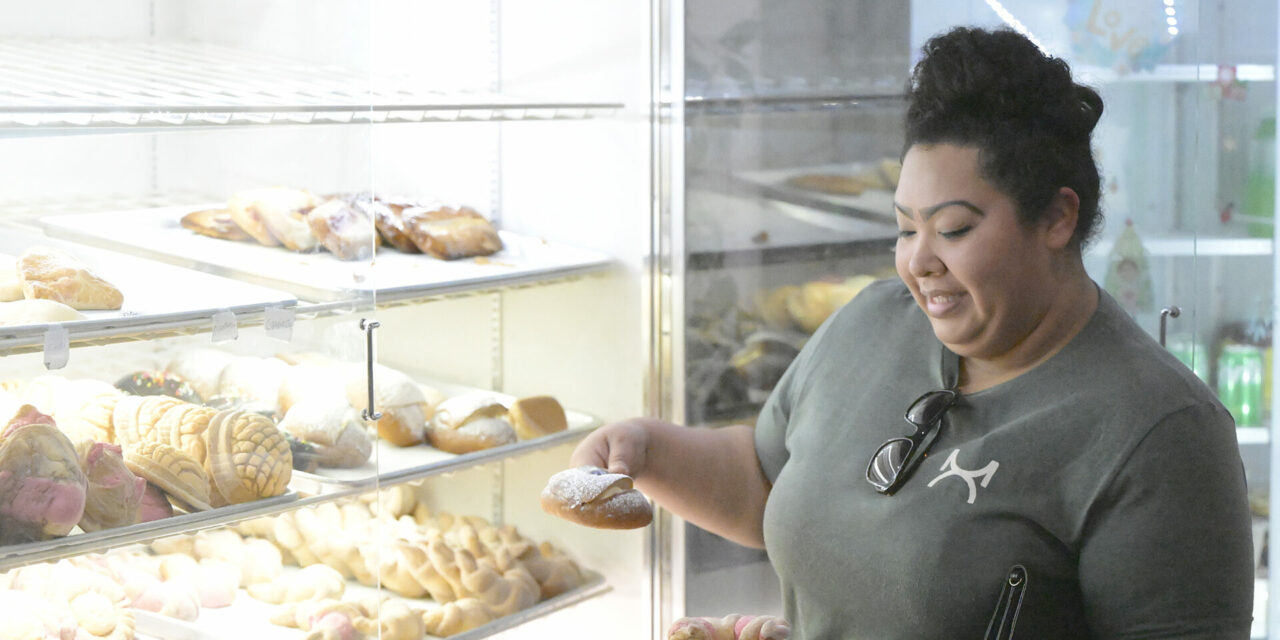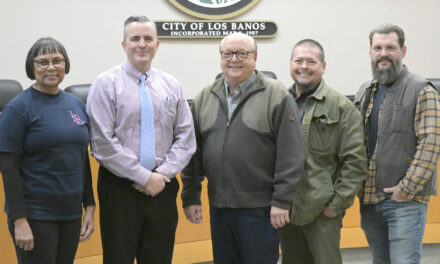BY SAMMIE ANN WICKS
The Westside Express
Since the beginning of time, the earth has been perpetually tilting and turning, and with it, all of life, moving to the same rhythm, from dark to light, from cold to hot–and in between.
People across the globe, as we here and in California, stand at such a midpoint now–halfway through winter before the advance of spring–and mark off this point by rites and rituals considered sacred–whatever the differences in our particular beliefs.
In western countries, and across the world, Jewish peoples celebrate the season with Hanukkah (Chanukah), Christians with Christmas and Asians with the New Year.
Now, the world’s peoples mark the shift in climate symbolically with dance, with song, with food, with gifts, with ritual, and with prayer, grateful to have endured the long, cold winter, and in anticipation of the coming spring, bringing hope.
We in Los Banos join in these traditions, of course–and for this issue we choose to leave the past’s difficult year behind us and report on holiday celebrations with something lighthearted and fun–festive food–in all its regional varieties.
Mexican Cuisine
We in Los Banos, Dos Palos, and Firebaugh lead with that most delightful of human creations, and an iconic staple in our region, the mighty Tamal. Known to all of Latin America, and the whole of Mexico, historians trace the original tamales to ancient Aztec and Mayan civilizations. When you next enjoy them, pause and reflect on others, thousands of years ago in prehistory, doing the same.
Today, tamales are made and consumed year-round but are especially prized during the Christmas season–la Navidad–in Los Banos no less than in the regions around us. Tamaleros–tamale makers–abound around town and are now working tirelessly to keep up with local demand.
Some local residents honor the season’s tradition by holding their own Tamaladas (tamale-making parties) with friends and family, working in fun-filled assembly lines to spread the lard-and-masa dough over corn husks, stuffing and rolling each, and lowering them, tie-end down first, into huge steamer pots of water and chicken stock.
Owing to tamales’ popularity, others in town have made tamale-making a year-round business.
“I figure we’ve made about every kind of tamales you could think of in our 30 years in business,” said Los Banso’s Juan Carlos Soto, with his partner Ernesto Botello the owner-operator of Zeledon’s Bakery on Wheels. “And that’s into the thousands of tamales–I’ve lost count.”
Soto said he and his family got their start by providing locals with basic Mexican “on-call” food that customers can call in for, or order over his app.
“Being mobile and fast, and easy and delicious, really made us popular when we started,” Soto said, “and then we just took off from there. Now we carry dozens of foods that we still make ourselves.”
With his homemade tamales as a basic offering, Soto recounted a longer list of foods locally popular across the city’s various communities–presented in his own unique visual style.
“We’ve got our tamales wrapped in the traditional ojas (corn husks), but we put them out in a bunch of strong colors, like red and purple and yellow,” Soto noted. “And people love it.” Soto’s palette of tamales also has expanded exponentially.
“We now offer tamales like chicken in mole, chicken in salsa verde, pork with salsa roja, bean and cheese with chile verde, and a new one for us–cheese with rajas (strips) of jalapeño,” Soto recounted. “And then, we have now really gotten into our sweet tamales–with pineapple, strawberry, and blueberry jam–we cook the fruit ourselves.”
The chef added his company has continued to offer another local favorite: the well-known traditional Mexican pastry called, variously, Pan Dulce, Pan de Huevo or Conchas.
“We have our favorite pastries like Conchitas (small versions), Elotes (formed in the shape of an ear of corn) and many others,” Soto said.
With his Pan Dulce, Soto’s offerings, while traditional, also come with a visually artful twist: common versions elsewhere are beige dough topped with sweet, sugary icing in yellow, brown, and beige colors (for pineapple, chocolate, and vanilla); but some of Soto’s sport deep green icing decorated with a red heart.
“It’s the look of our food, added to the flavor, that people like–and we’re very grateful for the success that’s giving us,” Soto remarked. “That makes up for the long hours we put in.”
Why does he work so hard? The Westside Express asked him.
“First, I Iove what I do,” Soto said. “And second, we’ve got five kids. It keeps me going.”
A dozen or so similarly traditional Mexican foods, including seasonal ones, also are specialties at Los Banos’ La Gloria Restaurant and Desserts, run by chefs and partners Norma and Lucio Telles.
“For sure, we listen to our customers’ requests and tastes, and do our best to offer all of them,” Chef Norma says, “and we do so all year ’round. But especially in the winter, the colder weather makes people come in wanting something really hot and rich and spicy, like Posole, and now at Christmas we’ve been serving a lot of it.”
Telles said her establishment also offers a variety of desserts, according to customers’ preference, as well as authentic Carnitas, a rich, fat-marbled, and slow-cooked shoulder of pork, served as tacos with fresh cilantro, onion, and green salsa, or just tucked inside a flour tortilla.
“Our all-time favorite drink, however, is our fresh Champurrado, and we have it on hand all the time,” Telles declared.
The chef referenced the classic, chocolatey, historic Mexican Atole–a thick, rich drink made with masa, milk, dark Piloncillo sugar, sometimes mixed with cinnamon and/or vanilla, and beaten into a frothy texture. Nuts, citrus zest, and an egg are sometimes added as variations.
Telles says she and her partner have worked in the restaurant industry for 30 years, both in Mexico–she is from Michoacán–and now in Los Banos.
“Once here, I started taking classes at the University of Santa Clara, but after a while, with the need to make money, we decided to get back into restauranting here, and formed our LLC. We’re enjoying what we’re doing here and are glad we made the decision.”
Still other Los Banos bakeries carry favored Mexican pastries like Pan Dulce, but staff at Seventh Street’s Oropeza Bakery said it’s their style of a classic Mexican Christmas cake–Pastel de Tres Leches, or Dulce de Tres Leches (Three Milk Cake) –that is wildly popular.
“We do make this cake,” the staff told us, “and it’s worth all the time required to make it because it’s so popular.”
The staffer refers to the time-honored specialty cake made by soaking a flat sponge cake in sweetened condensed milk, whole milk, evaporated milk, sugar, vanilla and rum or brandy and then letting the cake sit, covered, in the refrigerator for as long as overnight. Afterward, the cake is decorated with whipped cream and topped with raspberries or strawberries.
This brief account of typical local holiday foods is appropriate, given that California is one of the U. S. states bordering Mexico and historically shares in the cultural traditions of both countries.
But people from other, more distant cultures live and work in Los Banos and our region, contribute to the community, and–you won’t be surprised–enact their own unique rites to mark what to them is the most revered time of year.
Vietnamese Cuisine
“Even though we live here in California, far from our old home, we always celebrate our New Year,” says Vietnamese native Tracy Ho, manager of Lovely Nails and Spa in Los Banos. “It is our most important time as Vietnamese, and we never forget to do all the things to show it.”
That always includes visiting friends and family, giving kids the famous red envelopes with money, honoring elders and serving special foods as a special observance, she said.
Those special foods, however, are not always served in restaurants, said another Vietnamese native, Dung Tran of Saigon One in Modesto.
“The New Year foods are favorites,” he said, “but we make them at home and enjoy them with family to make them special.”
Tran stressed the annual days-long Vietnamese celebration reestablishes interpersonal bonds above all else.
“At first, we visit with family,” Tran said. “Then after, we go see friends. It’s our way.”
The “special foods” of the New Year Tran and Ho mention include Banh Chung–pork with rice, mung beans, and additional ingredients for flavor; Gio Cha–the well-known and popular Vietnamese Spring Rolls; and Xoi dau –“sticky” rice with beans.
Vietnamese holiday foods bring attention to the festive, joyous observance of the Lunar New Year, also called Tet.
Typically lasting from seven to nine days, Tet in Vietnam and other countries where Vietnamese live celebrates not only the coming of spring, but the core meaning of Vietnamese identity.
Throughout Tet, revelers witness a spectacular, noisy, happy commotion in the streets, as characters throw firecrackers in the air while ringing bells, beating drums, and striking gongs to chase evil spirits away.
Then, just around the corner, a beautiful, fearsome beast appears with glowing eyes, tossing its head, prancing, snorting steam, and sinuously coiling its way through city streets.
It is the powerful dragon figure, making its supreme power known, evoking a kingly presence, and symbolizing the intense, vital spirit of the Vietnamese people themselves–and a fearless representation of their ancient history.
Living away from their home country, Vietnamese observe the New Year with as much fervor and devotion as their peers in the homeland.
The persistence of New Year observances is nowhere more evident than in our own region and in Los Banos, with Vietnamese here carefully enacting each cultural practice through Tet’s days-long holiday.
“No matter where we are living, whether in Vietnam or elsewhere, we celebrate the Lunar New Year,” said Los Banos Realtor Gabriel Nguyen. “New Year is who we are.” Each and every custom, he said, is faithfully enacted.
(Here, Nguyen references Tet–the first night of the year when the new moon appears during the first month of the Lunar calendar.)
“First thing we do, in preparation for the celebration, is thoroughly clean the house,” Nguyen says. “In that way, we prepare and avoid bad luck.”
With surroundings well-ordered, Nguyen says most families begin to prepare traditional Vietnamese New Year food and share them with others.
“You will often see candies offered, and dishes like Banh Bot Chien, our rice cakes, will be served,” Nguyen explained. “And we enjoy them as a family and offer them to friends and people visiting us.”
Throughout the long holiday Nguyen says a family’s elderly–living or dead–are affectionately spoken of and shown respect.
“In the first days of New Year’s, parents take their children to visit with their grandparents, to wish them well with good luck, and show the connection between the family’s founders and the younger generation,” Nguyen declared.
During observances, Vietnamese celebrants also focus on relatives who have passed on, Nguyen said, in the Vietnamese belief that the spirits of the dead visit the living during Tet.
Tet is also about children, too, and families give them special attention throughout the holiday.
“Grandparents will give their grandchildren money in bright red envelopes to show their devotion,” Nguyen notes, referring to Vietnamese “li xi,” or “Lucky Money,” said to give blessings and good luck in future days.
All this wisdom is in keeping with the Vietnamese idea of luck–what they call “May man.”
And so it comes our way–
The New Year.
The approach of spring, the return of warm weather and young, green plants, while the spirits of the dead look on.
And Luck, that persistent expectation of the Vietnamese: more than chance, a powerful force, spiritual in nature, conferring blessings on the worthy and unworthy.
“On nưoc con tat”
“As long as there is life, there is hope.”





